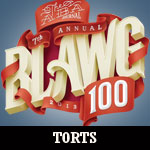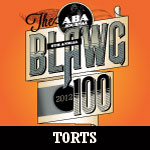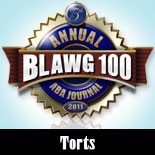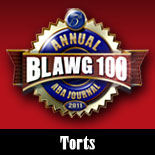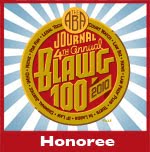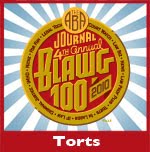The McDonald’s Hot Coffee Case: Revisiting The Eyewitness Trial Testimony
One chilly morning in February of 1992, a routine purchase of a cup of coffee in Albuquerque, New Mexico forever transformed the tort reform debate. As a result of the spill of that cup of coffee, 79 year old Stella Liebeck would become the world’s most famous civil litigant. Twenty years ago this week, in August of 1994, Liebeck took her case to a Bernalillo County jury, which awarded her $200,000 in actual damages (reduced by 20 percent due to a comparative fault finding) and $2.7 million in punitive damages. The court later ordered that a new trial would be held due to the “excessive” amount of punitive damages unless the Plaintiff accepted a remittitur of the punitive damages award to $480,000. A few months later, the case settled for a confidential amount, forever establishing it as a fixture of litigation lore and urban legend.
The two week trial would become the most discussed civil case of its time and fodder for late night comedians. Despite the passage of two decades, the underlying facts of the case continue to be debated and myths abound, in part, because there is no widely accessible official account of the case. Because the case settled a few months after its notorious verdict, no appellate court issued an opinion setting forth its key facts and legal issues. Even today, civil litigation is not often covered in detail in the media, and in 1994, the nascent Internet had yet to provide access to online dockets, pleadings, and the like. So it was that a 1994 Wall Street Journal article and the late night talk shows shaped the opinions of the case for years to come.
In his opening statement, Liebeck’s attorney explained to the jury that Liebeck “received this eight ounce cup of coffee handed to her by her grandson, and placed it in between her knees to hold it because she had difficulty in removing the plastic lid.” Of course, the trial involved a host of expert opinions, warning issues, and damages testimony. But, at its essence, the case involved the actions of Liebeck. All these years later, the trial testimony of Liebeck and her 30 year old grandson, Chris Tiano, are helpful in dispelling the myths that have arisen over the years.
First and foremost, despite what you may have read, Liebeck was not driving the vehicle. In fact, Tiano was driving the 1989 Ford Probe as they ordered breakfast that morning. Liebeck was in the front passenger seat. The two had just driven Liebeck’s brother from Santa Fe to Albuquerque to drop him off at the airport. After that errand, they visited the drive-through of the McDonald’s on Gibson Boulevard. At trial, Tiano estimated that they at the restaurant sometime before 8:30 a.m. that fateful Thursday morning. On August 9, 1994, Tiano, the first trial witness, recalled that they “ordered a couple of value meals,” with him ordering a Sausage McMuffin and orange juice and his grandmother choosing an Egg McMuffin and a coffee. Liebeck testified that Tiano requested the cream and sugar for her coffee. He drove to the window and the McDonald’s employee “handed the drinks out first” and he “handed it over” to Liebeck. The next day of trial, August 10, Liebeck testified that she did not believe that Tiano requested a cardboard tray for the beverages.
The vehicle was not in motion when Liebeck spilled coffee on herself. After taking the drinks and bag of food, Tiano drove from the drive-through to a parking space in the McDonald’s lot. Liebeck testified that Tiano parked “so [she] could put cream in [her] coffee.” On cross examination, Liebeck agreed that the cup’s lid was on “pretty snug” and that the cup did not leak at the time it was handed to her. She did not notice the pull away tab on the lid (which existed, the defense contended, to permit the addition of cream and sugar to the coffee). Tiano testified that Liebeck “started to fix her coffee” as he was “trying to get [his] meal organized” because he “had to run some errands that morning.” Specifically, Tiano planned to visit the Albuquerque Country Club so that he, an assistant golf professional, could pick up a check for his golf pro father.
Liebeck positioned the cup of coffee between her legs in an attempt to open the lid to add cream and sugar. Liebeck testified that she initially looked for somewhere else to put the cup of coffee before deciding to hold it between her knees. On that point, she testified that she “took the cup and [she] tried to get the top off” but she “couldn’t hold it, so [she] put it between [her] knees and tried to get the top off that way.” In so doing, she “accidentally” spilled the coffee into her lap when the lid “slid” and “tipped off.” When asked on cross if she still felt it was wise to hold a cup of hot coffee between one’s knees, she replied that doing so was “just a normal thing to do” as she “wouldn’t expect [the lid] to slide over.” Immediately after the spill, Liebeck felt “excruciating, searing pain.” Tiano testified that he “looked over” after Liebeck “started screaming” and saw “the cup was inward.” Liebeck testified: “I went into shock. I became all clammy, cold, and was fainting and throwing up or I thought I was throwing up.” The photographs of Liebeck’s injuries – made public in the recent HBO documentary “Hot Coffee” – illustrate the severity of the injuries sustained by Liebeck as a result of the spill.
After the spill, Liebeck and Tiano did not return to the McDonald’s for assistance. Neither Tiano nor Liebeck testified that they returned to the McDonald’s to seek help after the spill. Tiano exited his side of the vehicle and ran to the other side to investigate the reason for his grandmother’s pain and discomfort. He testified that he shouted to his grandmother that “it’s just coffee. It’s just a hot water burn, nothing serious.” He further testified that he “let her walk around in the chilly air” and “she cooled off and got back into the car.” He “thought everything was fine” and the two then “drove down the road” to address his aforementioned errands. At least during their trial testimony, neither of the two witnesses mentioned seeking help from the employees of the McDonald’s franchise.
After leaving the McDonald’s parking lot, Tiano and Liebeck did not immediately seek medical care. Tiano proceeded to the Albuquerque Country Club as planned, and as he testified at trial, Liebeck began to feel nauseous, but he was “still not thinking it’s very serious.” Tiano stopped the vehicle on the side of the road because Liebeck felt she might vomit. As they were stopped, an observant resident emerged from her home to see if they wanted her to call 911. They declined and proceeded again to the country club. Once there, Tiano testified that he left Liebeck in the car as he went to retrieve the check. It was only when he returned to the vehicle that Liebeck requested that they find a local fire station to seek first aid. Ultimately, they drove to Northside Presbyterian Hospital, where she was seen immediately for medical treatment.





